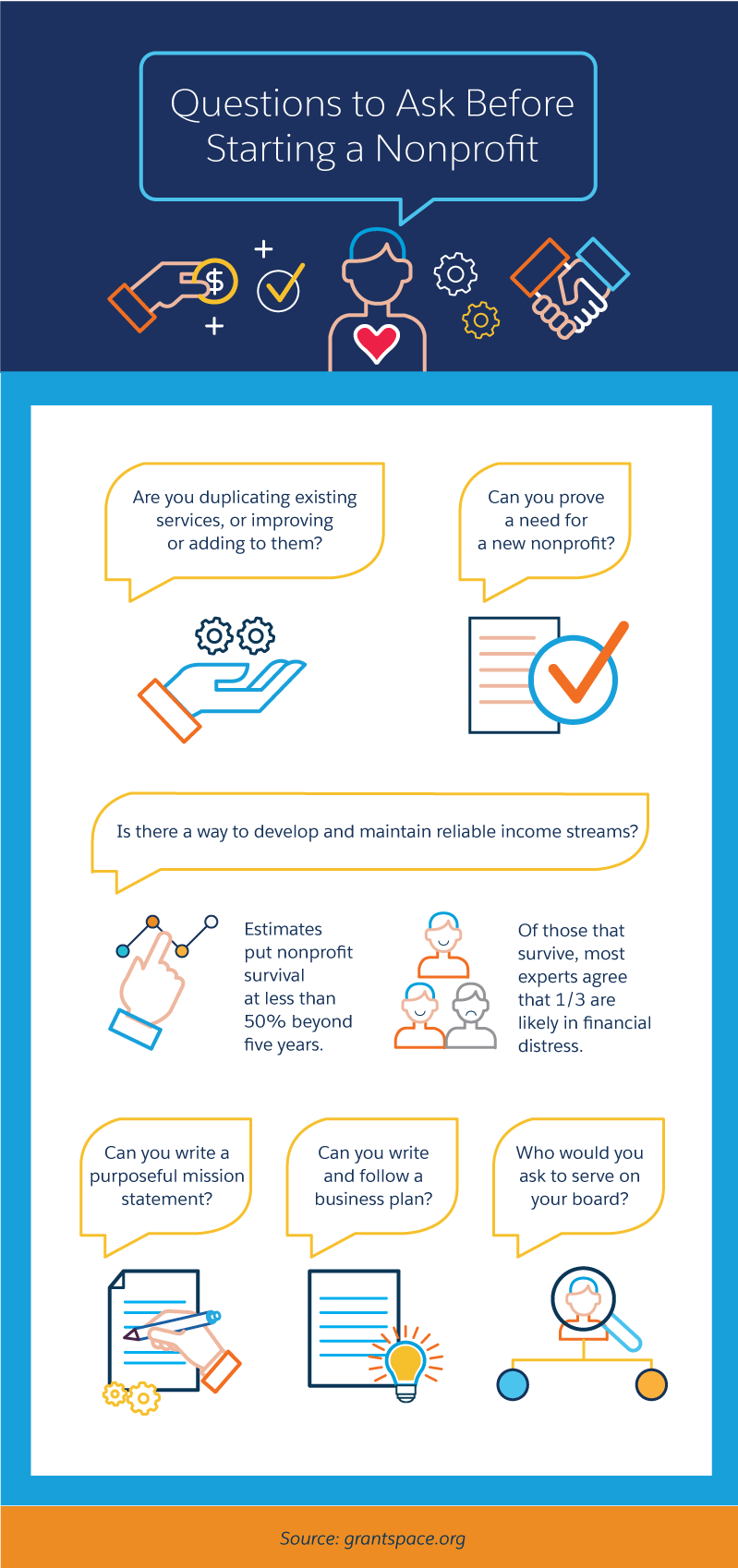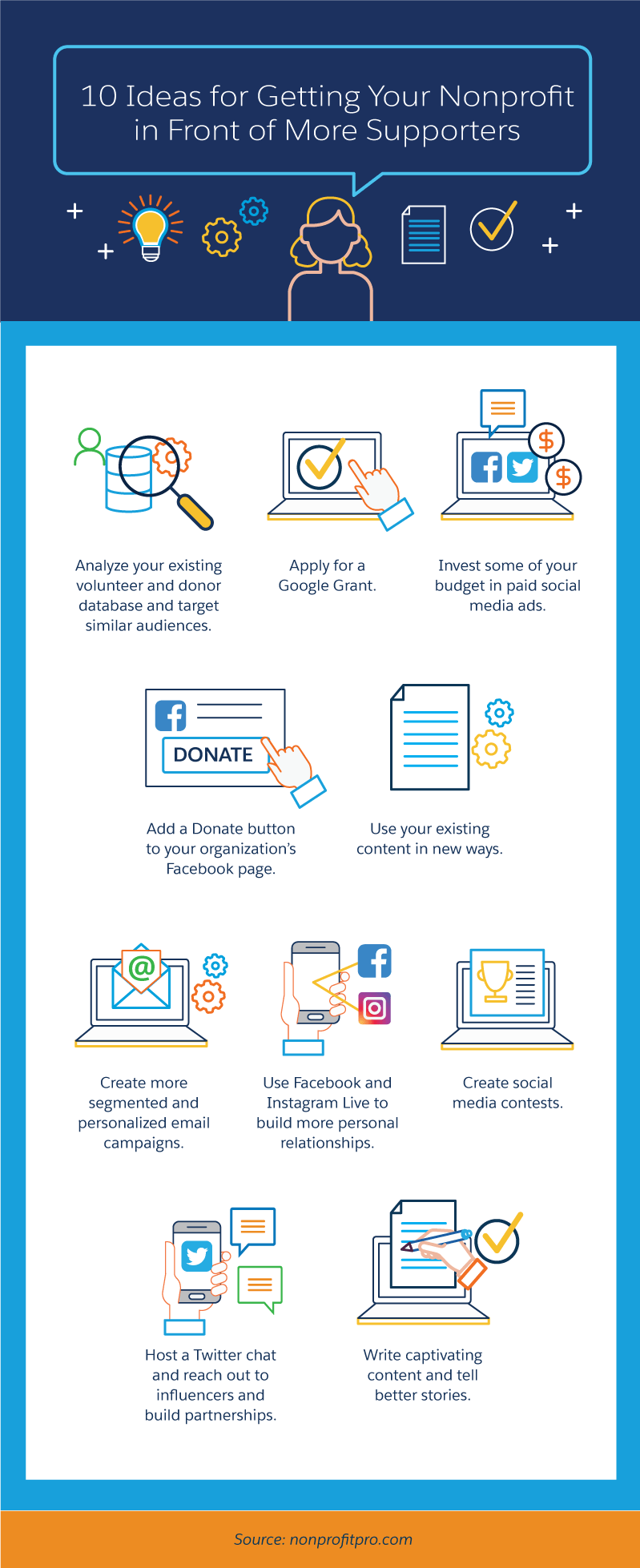While businesses and nonprofits differ in fundamental ways, there are similar operational realities that can be addressed with many of the same techniques and tools. Nonprofits, just like many businesses, must optimize the use of their resources, convey their messaging to the right audience at the right time, and employ the best possible technology available in order to exceed their goals.
Below are six ways nonprofit organizations must excel to better enable them to save the world.
1. Get the Most Out of Limited Resources
One of the factors that most closely ties nonprofits together with for-profit businesses, especially companies that are young or operate in industries with razor-thin margins, is that they both have to use their limited resources in the most effective way possible in order to create outstanding experiences for donors and customers. In order to manage your nonprofit well enough that it can become a sustained force for change in the world, you must be able to optimize the use of all your assets and spend as wisely as possible.
Part of this process involves cutting costs when it makes sense — but being thrifty isn’t the only consideration. It’s also about knowing where to invest your resources and, just as importantly, where not to invest them.
As a nonprofit, part of the value of your organization lies in the public seeing your work and feeling compelled to donate to further help the cause. Therefore, it makes sense to allocate a higher percentage of resources to activities that visibly promote your goals in the community, and to spend more reticently on administrative tasks that occur away from the public eye.
Questions to Ask Before Starting a Nonprofit
- Are you duplicating existing services, or improving or adding to them?
- Can you prove a need for a new nonprofit?
- Is there a way to develop and maintain reliable income streams?
- Estimates put nonprofit survival at less than 50% beyond five years.
- Of those that survive, most experts agree that 1/3 are likely in financial distress.
- Can you write a purposeful mission statement?
- Can you write and follow a business plan?
- Who would you ask to serve on your board?

2. Employ Business-Minded Leaders
In many ways, the term “nonprofit” is problematic because it insinuates that the organization has no interest in making money. However, you should still run your organization in a way that maximizes your ability to earn profits, even though it is being reinvested in your mission instead of distributed to shareholders.
One of the best ways to accomplish this is to employ people in leadership positions who will run your organization like a business. People who have experience guiding businesses to prosperity are often good with budgeting and spending, but they also bring another very crucial skill to the table: They frame every decision and action through the lens of customer value.
A big challenge for nonprofits is keeping sight of your goals in the midst of growing bureaucracy. If the leaders of your organization always ask themselves whether an action will contribute to the value of the donors — essentially, if it will further the organization’s mission and enhance its standing in the community — then you will never lose sight of the true purpose of your organization.
3. Reframe Your Messaging as a Value Proposition
Communicating your organization’s messaging to your intended audience is just a long-winded way of saying “marketing” and, yes, nonprofits do need to engage in effective marketing in order to be successful. Many people erroneously think marketing is vastly different at a for-profit business than it is at a nonprofit because businesses are marketing tangible products and services. However, the most successful marketing professionals will tell you that’s not what they do at all; instead, they work to communicate value to their customers.
For marketing at for-profit companies, this means not telling your buyers what your product does, but how it will enhance their experience. For nonprofits, it entails not just describing the actions of your organization, but showing your potential donors what it means to them.
One of the tools businesses use to optimize their marketing efforts is marketing automation software; these solutions can also empower nonprofits to improve their messaging and their marketing reach. Marketing automation can help you format your marketing materials and schedule your communications for optimal impact, and help you forge a deeper connection with your donors through measures such as personalization and a more intimate donor journey with a variety of touchpoints.
To Run a Nonprofit Effectively, You Need to Be Great at Marketing
- Of the most effective nonprofits, about 2 out of 3 are using editorial best practices like editorial calendars and meetings and repurposing their content, while only 1/3 of less-effective nonprofits are.
- The top 3 communications goals for nonprofits in 2018 are:
- Engaging community
- Managing brand and reputation
- Raising issue awareness
- On average, nonprofits:
- Post on Facebook and Twitter 7 times a week
- Post on Instagram twice a week
- Send, in one year:
- 2 print newsletters
- 3 print appeals
- 8 press releases
- Send, in one month:
- 3 email newsletters
- 2 email appeals
- Create, in one month:
- 13 graphics
- 11 articles of various lengths
- 1 video

4. Use Technology to Connect with Donors and Improve Efficiency
For nonprofits, membership and development activities are similar enough to the sales process of for-profit companies that it makes sense to use some of the same tools in order to nurture relationships effectively. One of the most important of these tools is customer relationship management (CRM) software. It allows salespeople (and other units within an organization) to track interactions with prospects and customers and build a database of valuable information that can be used to enrich the relationship for both parties.
Since relationship building is one of the most important aspects of nonprofit donor management, you can see how a CRM platform also has wide-ranging benefits for organizations that need to excel at this task. High-quality CRM solutions let you build comprehensive databases that are easy to pull information from at a moment’s notice. They also allow you to track the progression of donor relationships over time. Some products even offer the option to customize packages with elements that are specifically designed with nonprofits in mind.
10 Ideas for Getting Your Nonprofit in Front of More Supporters
- Analyze your existing volunteer and donor database and target similar audiences.
- Apply for a Google Grant.
- Invest some of your budget in paid social media ads.
- Add a Donate button to your organization’s Facebook page.
- Use your existing content in new ways.
- Create more segmented and personalized email campaigns.
- Use Facebook and Instagram Live to build more personal relationships.
- Create social media contests.
- Host a Twitter chat and reach out to influencers and build partnerships.
- Write captivating content and tell better stories.

5. Refine Your Processes through Data Management and Analysis
Performance measurement, results, tracking, and data analysis are the hallmarks of successful for-profit companies, and they have an important role to play in the nonprofit world as well. Savvy leaders know it’s impossible to systematically improve processes (as opposed to guessing and getting lucky) unless you diligently track your results according to predefined metrics and measure the effects of changes. Just like the largest and most powerful corporations in the world, a nonprofit is only as good as its data.
The first step — decide which metrics to focus on. You likely don’t have the resources or capacity to track everything, so make sure you look at the metrics that tell the most important stories about your performance. Once you have them, track them diligently and use your software tools to get the most out of your data — many CRM platforms and marketing automation solutions have advanced data analysis tools built in. Then, you can begin to implement solutions that are based on evidence and will immediately impact your processes.
6. Improve Your Social Reach
Love it or begrudgingly love it, social media is an inescapable part of running any kind of organization, be it for-profit or nonprofit. Successful companies take advantage of the specific attributes of each social platform in order to improve their relationships with customers, deliver value-added content, partner with like-minded organizations, and build brand equity. Indeed, your organization can benefit from social media in many of the same ways.
You can use the reach of Facebook to increase brand awareness and answer questions from members and those in the community who are impacted by your organization. You can use the immediacy of Twitter to keep followers apprised of important events and developments. You can take advantage of the intimacy of Instagram to give donors an inside look at the organization and let them see how their donation dollars are spent. You can even use the networking power of LinkedIn to help with fundraising initiatives and seek out partnerships. According to surveys, 84 per cent of users use social platforms to share their support for causes they care about. Your donors and potential patrons are on these social platforms, and it’s up to you to meet them there.
It is no small feat to save the world. To do so, though, requires business acumen, discipline, and social-media savvy. Follow the recommendations above and over time you’ll see an increase in productivity and impact.
Share "How to Save the World: The Basics of Running a Nonprofit" On Your Site




